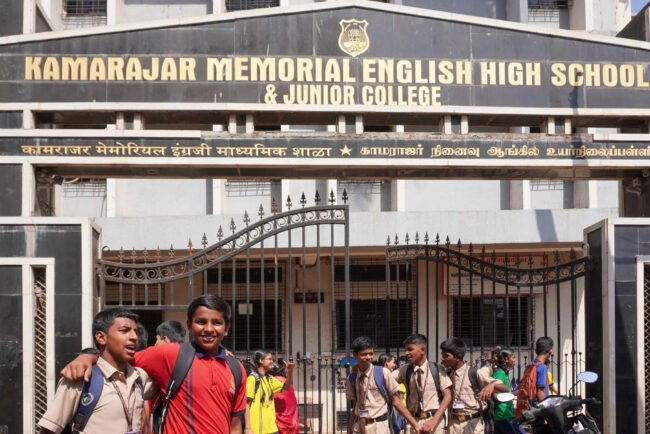MUMBAI, INDIA – The linguistic landscape of India is undergoing a significant transformation, as the debate over the status of Hindi intensifies. While Hindi remains the most widely spoken language in the country, particularly in the northern regions, a growing number of states in southern and western India are increasingly resistant to its imposition in educational curricula. This shift was humorously highlighted by a comedian in Mumbai, who noted that southern states have been “swiping left” on Hindi, a reference that resonated with the predominantly Marathi-speaking audience.
The ongoing discourse surrounding language and identity in India has become a focal point of political contention. Over the past year, several states have declared their intention to prioritize local languages over Hindi in primary and secondary education. This move has sparked concern within Prime Minister Narendra Modi’s government, which has advocated for making Hindi compulsory in schools nationwide. Modi’s vision of a Hindu nation aligns with the belief that an ideal Indian citizen should be both Hindu and fluent in Hindi. Critics argue that this approach threatens the rich tapestry of India’s linguistic diversity.
Karnataka’s Stand Against Hindi
The southern state of Karnataka has recently joined the ranks of states opposing the Hindi-centric educational policy. In early August, a high-level commission recommended that Kannada, the state’s primary language, or the child’s mother tongue, be taught alongside English. Currently, public schools in Karnataka offer a mix of English, Hindi, and local languages, but the new recommendation signals a shift towards prioritizing regional languages.
India is home to approximately 780 languages and dialects, as noted by the People’s Linguistic Survey of India. Since gaining independence in 1947, English has served as a bridge language for official and administrative purposes, further complicating the linguistic landscape.
“This debate transcends the question of teaching Hindi in schools,” explains Akshya Saxena, a professor at Vanderbilt University specializing in Indian languages. “It’s fundamentally about defining national identity.” Saxena emphasizes that the discourse is largely political, with little input from parents, students, or educators.
The Political Underpinnings of Language
According to Dhirendra Jha, a researcher on Hindu supremacist ideology, the Bharatiya Janata Party (BJP) envisions the ideal Indian citizen as a Hindi-speaking Hindu. This ideology has historical roots dating back to the early 20th century, during the struggle for independence from British colonial rule. The Indian National Congress, the predominant anti-colonial party, initially proposed Hindi as a national language, a move that faced backlash from various political factions, including within the Congress itself.
The Rashtriya Swayamsevak Sangh (RSS), the ideological parent of the BJP, championed Hindi as a unifying language to promote its ideology. Jha notes that this decision was strategic, as the RSS sought a common linguistic thread to connect its followers across diverse regions.
“Language embodies culture, history, and identity,” Saxena asserts, highlighting the complexity of the current linguistic debate. The framers of India’s constitution recognized this diversity, ultimately designating Hindi and English as official languages at the national level while allowing states to adopt their own official languages.
However, Jha describes the current situation as a “hornet’s nest,” with tensions escalating as various states resist the imposition of Hindi. Saxena argues that the BJP’s perception of Hindi as a monolithic entity is misguided, as the language encompasses a multitude of dialects that often blend into one another.
Controversies and Backlash
The controversy surrounding Hindi imposition gained momentum in February when Indian Education Minister Dharmendra Pradhan announced that Tamil Nadu would not receive a federal allocation of 2,000 crore Indian rupees (approximately US$227 million) for education unless it included Hindi in its curriculum. Pradhan claimed that the National Education Policy (NEP) of 2020 mandated Hindi instruction, but a closer examination of the policy reveals that it merely recommends students learn three languages, with at least two being “native to India.”
Salem Dharanidharan, a spokesperson for the DMK party governing Tamil Nadu, condemned the minister’s remarks as “blackmail,” asserting that the state would resist any attempts to impose Hindi. Tamil Nadu has a long-standing history of opposition to Hindi, rooted in its unique linguistic and cultural identity.
Despite the controversy, Tamil Nadu has maintained its language policy, and no penalties have been enforced thus far. Both Karnataka and Tamil Nadu are governed by parties that oppose Modi’s BJP, but the strongest resistance to what is being termed “Hindi imposition” has emerged from Maharashtra, a state led by a BJP coalition.
The Maharashtra Dilemma
In April, Maharashtra’s state leaders announced that Hindi would become the compulsory third language in all public schools. Chief Minister Devendra Fadnavis argued for a unified language for communication across the country. However, this proposal faced immediate backlash from opposition parties, who viewed it as an attack on the Marathi language. They contended that while they identify as Hindu, they do not need to learn Hindi to demonstrate their patriotism.
The pressure from opposition parties led to the withdrawal of the initial policy. In June, the Maharashtra government revised its stance, stating that Hindi would not be compulsory but would be “generally” taught from classes one to five. Critics argue that this is merely a backdoor attempt to introduce Hindi into the educational system.
“Language is the final frontier,” Jha remarks, suggesting that while the BJP may find it easier to promote Hindu dominance, imposing a language on a diverse population presents a formidable challenge. He warns that the party could ultimately lose this battle.
In early July, opposition parties, led by the Shiv Sena and the Maharashtra Navnirman Sena, announced plans to protest against the Hindi policy. MNS leader Raj Thackeray declared, “We will shut down schools if Hindi is imposed.”
Conclusion
The ongoing debate over Hindi’s role in India’s educational system reflects deeper issues of identity, culture, and political power. As states assert their linguistic rights, the central government’s push for a unified national language faces significant resistance. The outcome of this linguistic struggle will not only shape the future of education in India but also influence the broader narrative of what it means to be Indian in a country characterized by its rich linguistic diversity.









